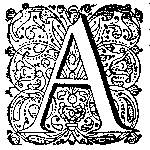The Remains of the Night
Nocturnalization, Street Lighting, and Urban Life in Eighteenth-Century Antwerp
DOI:
https://doi.org/10.51750/emlc18372Keywords:
time use, work hours, daily rhythms, leisure time, sleep patterns, nocturnalizationAbstract
Several theories claim that the rhythms of daily life changed dramatically in the late eighteenth century, as a result of the advent of street lighting. New technologies made it possible to work longer hours, enjoy a dash of leisure time, or otherwise stay active during the evening. People thus slowly but surely ‘colonized’ the night. Drawing on new empirical data from the eyewitness accounts of the local criminal court in Antwerp, this article subjects this theory to a thorough investigation. The findings show that there was no real increase in nocturnalization because Antwerpers – even without new street lamps – remained active for a long time anyway. They usually continued working long after sunset or had time for leisure. Sleep was limited to the biological minimum. A deviant rhythm in which people remained active until the wee hours of the morning and only got up well after sunrise was reserved for a small group of people who belonged either to the absolute cream of the crop or to the fringes of society.
Downloads

Published
Issue
Section
License
Copyright (c) 2023 Gerrit Verhoeven

This work is licensed under a Creative Commons Attribution-NonCommercial 4.0 International License.





